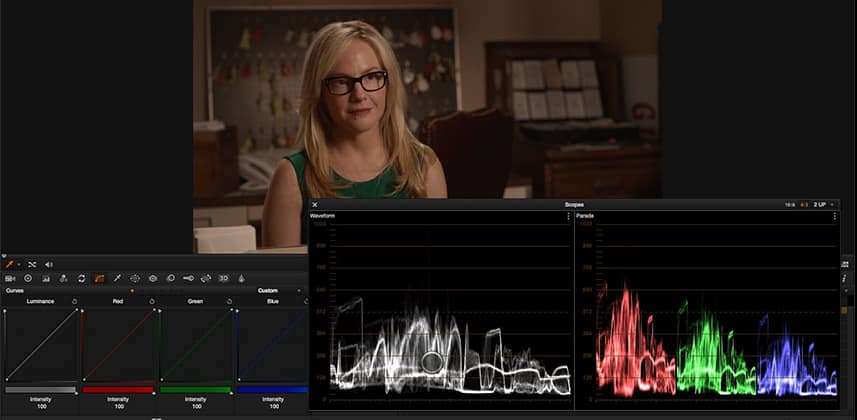Young colorists often hear the advice of ‘use the full tonal range’ and tend to want to color correct every shot with their blacks set at 0 IRE and their highlights set at 100 IRE. Whether it’s a late-night interior or the desert at high noon, there’s an urge to make sure every shot is using the full tonal range afforded to us.
This is a mistake.
The Tonal Range Fallacy
While it’s true that our brightest highlights should live at or near 100 IRE and our blackest shadows should live at or near 0 IRE… not every shot has both bright highlights and dark shadows. And just because a scene is overly bright or overly dark, doesn’t mean there are highlights that deserve to be set at 100 IRE or shadows at 0 IRE. The urge to fill the entire tonal range with every shot we grade is what I call the ‘Tonal Range Fallacy’.
Contrast is Relative
The idea that I needed to think about the contrast range of a scene versus scene and not just shot-by-shot, that took me a little while to internalize. It’s only when I started working on feature-length Indie films that I started exploring the concept of setting a tonal range for a scene… and using the juxtaposition of scenic tonal ranges to make our images more interesting.
In other words – I frequently set highlights for a scene well below ‘the highlight range’ on our scopes and shadows well above ‘the shadow range’. Why? Because across an entire long-form project it helps make the 0-100IRE tonal range feel much broader than it is. If you take this approach, the contrast between scenes is as important as the contrast within a single shot.
Managing Contrast Across Scenes in ‘Sunbelt Express’
In this Insight I’m back using ‘Sunbelt Express’ since it’s the perfect expression of this concept. The key scene in this film takes place in the desert at high noon, often intercut with a scene in the trunk of a car and an office interior.
One of my decisions early on was to NOT use the full tonal range afforded us for each shot and only use smaller tonal slices for each of the scenes to help make edits between the near-black trunk and the blazing hot desert more dramatic.
In this Insight you’ll learn how I use smaller ‘tonal slices’ within a scene to help add perceived contrast between locations.
About Sunbelt Express
To learn more about the indie feature used in this Insight:
• Sunbelt Express Wikipedia Page
• Sunbelt Express IMdB Page – It was a ton of fun grading a film with so many recognizable faces including Tate Donovan, Rachael Harris, Stephen Lang and Miguel Sandoval.
• Sunbelt Express in ‘IndieWire’ – This film officially went into pre-production in 2012 and had a Kickstarter campaign. This link is to an blog post back then, announcing the upcoming film.
Comments and Questions? Scroll down!
I think I’m explaining this concept pretty well in this Insight. If a question pop into your mind – or you have your own way of managing contrast between scenes – definitely drop me a line in the comments!
Member Content
Sorry... the rest of this content is for members only. You'll need to login or Join Now to continue (we hope you do!).
Need more information about our memberships? Click to learn more.
Membership optionsMember Login


